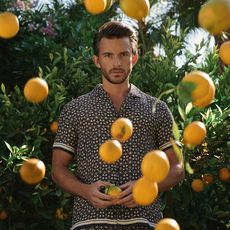HOW WE ARE BECOMING A CARBON NEGATIVE BRAND
Holidaying better means more than just having a good time
It’s more important than ever that we holiday better. That doesn’t just mean having the best times with family and friends. It also means making sure we leave as small a footprint on the environment as possible.
We know that our products contribute to climate change. We also know we have a responsibility to look after our planet. That is why, over the last two years, we have taken steps to reduce our carbon emissions.
But we want to go beyond carbon neutral. We are looking to become a carbon negative brand – offsetting our carbon emissions with blue carbon projects and investing in communities to actually reduce carbon emissions beyond what we produce. This is called carbon rebalancing.
To mark our carbon rebalancing partnership with SeaTrees, we spoke to their Director of Sustainability, Brett Giddings, about the great work they do. An expert in his field, Giddings works with brands all over the world to improve the sustainability of their operations.
What does SeaTrees do?
“We’re all about enabling brands and individuals to take action on climate change. Our focus is on regenerating and protecting coastal ecosystems where land meets the sea. We focus mainly on mangroves, coastal watersheds and kelp.”
How did SeaTrees start?
“SeaTrees is a program of Sustainable Surf, a non-profit that was formed back in 2012. We use surfing and playing in the ocean as a way to inspire people to protect the ocean. SeaTrees was launched in 2019 as a core part of the work we were doing with Sustainable Surf.”
How does it work?
“The ocean is where 90% of all carbon is within the global carbon cycle. The thought behind SeaTrees is that we should be recognising the superpowers of the ocean as an effective tool to suck carbon out of the atmosphere. One of the best ways to do that is by planting mangroves and protecting coastal ecosystems. This is what we mean when we talk about Blue Carbon. Mangroves are between 5 and 10 times more effective at sequestering carbon than a tropical rainforest.
Talk us through the partnership between SeaTrees and Orlebar Brown?
“So, first, Orlebar Brown calculated its carbon footprint. Then we work together to balance that footprint. We do this by giving them what we call a SeaTrees Token. For every tonne of carbon they produce, we source an independently verified carbon credit from an existing coastal watershed in Cambodia. In addition to that, we're planting mangrove trees and restoring kelp.”
Do you work with local communities to protect ecosystems?
“Our model in Cambodia is essentially to say to the local population: Hey, you can actually get paid for protecting these forests rather than cutting them down. By conserving these areas, they become a hotspot of ecotourism. The local project managers have been instrumental in setting up eco-lodges, so you've got everything from backpacking accommodation through to some of the best glamping in the world.
The idea is that there'll be sustainable long-term employment. In Indonesia, we're planting the mangroves and working with NGO Eden Projects, which trains people up, and then pays them for 10 to 15 years to guard the forest. In Southern California, there's a lot of fishermen that have been out-of-work because of the ecosystem imbalance. So, they are being employed by our partners, The Bay Foundation, to help restore the ecosystem. So, one day they might be able to go back there and fish that ecosystem.”
What is carbon rebalancing?
“Carbon rebalancing is not just offsetting your footprint, but also helping the planet to rebalance carbon levels back to the amount we need for a liveable planet. It is about going further than being carbon neutral — it's about giving back more than we're taking.”
Orlebar Brown will get the Ocean Positive mark when the project is complete, what does this mean?
“To get the mark, a brand calculates its carbon footprint. Then they take action to sequester more carbon emissions than they’re creating — having a positive impact on the ocean and the life it supports.”


